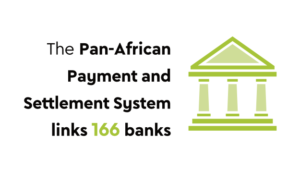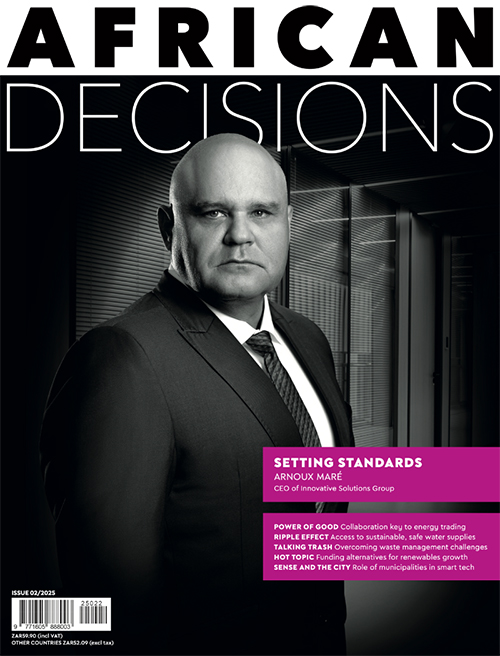According to a Swiss Re report on insurance in sub-Saharan Africa, the region (bar South Africa) accounts for only 0.2% of the global insurance market, even though it’s home to a ninth of the world’s population.
Insurance in the region is, however, developing. In fact, it outstripped general economic growth between 2000 and 2011, according to the firm, which is a wholesale provider of reinsurance, insurance and other insurance-based forms of risk transfer.
This opportunity has focused some of the largest life insurers in South Africa – Sanlam, Old Mutual, MMI and Liberty – on expanding their continental operations. The exception is Discovery which is not yet planning to head north, as CEO Adrian Gore says its model is better suited to markets with established private healthcare systems.
Short-term insurers such as Alexander Forbes have also set up shop across Africa.
According to the report, premium growth was strongest in oil exporting and middle-income countries. Nigeria, Kenya, Angola, Namibia and Mauritius are the largest markets, with a combined market share of 59%.
These markets are nowhere near the size of the insurance market in South Africa, which accounts for 73% of the continent’s premium income, according to KPMG’s 2013 South African insurance industry survey.
Insurance penetration in South Africa is high and its sluggish economic growth is putting consumers under pressure, making it difficult to further grow premiums. This is pushing insurers into the rest of Africa in pursuit of growth, although they are also attracted by an expanding middle class, a rise in disposable income and mobile technology, which solves the problem of distribution in countries where insurers lack infrastructure.
Sanlam has the largest operations in the rest of Africa, with businesses in 14 countries (excluding South Africa). This includes SADC states, Ghana, Kenya, Malawi, Mozambique, Nigeria and South Sudan.
The majority of Sanlam’s business comes from the SADC region. More developed insurance regions – Botswana and Namibia – accounted for almost half of the firm’s rest-of-Africa sales in 2013, according to a South African insurance sector report by global research company UBS.
Sanlam, however, is pushing to grow in other states. This year, it plans to spend in excess of ZAR2.5 billion on acquisitions in the rest of Africa and other emerging markets.
Bancassurance, where an insurer distributes its products through a bank to reach its client base, is considered a useful model in Africa
CEO Johan van Zyl told Business Day on the release of the insurer’s full-year results in March that it plans to make some small acquisitions on the continent.
Sanlam would like a short-term insurance business in Kenya and Botswana, according to Van Zyl. In Namibia, meanwhile, it intends to acquire pension fund administration and employee benefits.
Over a quarter of the firm’s operating profit now comes from outside of South Africa. It is aiming to earn 30% of net operating profit from outside the country by the end of 2015.
In Africa, Old Mutual – which is listed on the London and Johannesburg stock exchanges – is following a different path. It has a smaller footprint than Sanlam, with operations in seven of the continent’s countries, excluding South Africa.
The group is also working with Ecobank, in which its subsidiary Nedbank has a 20% stake, on distributing bancassurance products in Nigeria and Ghana. There is much potential for expansion as Ecobank operates in some 36 countries throughout West and Central Africa.
Bancassurance, where an insurer distributes its products through a bank to reach its client base, is considered a useful model in Africa where building efficient distribution channels and collecting premiums can be tricky.
‘We are exploring other markets with Ecobank to offer simple insurance products. But this is on a three-year basis, not immediately,’ says Ralph Mupita, CEO of Old Mutual Emerging Markets. This firm set aside ZAR5 billion to expand in Africa, of which ZAR3.6 billion has already been committed.
Its most recent acquisition is a majority stake in insurer UAP Holdings in the fast-growing East Africa, for which it is pending regulatory approvals. Once finalised, most likely around mid-year, UAP and Old Mutual’s existing Kenyan business will offer life insurance, asset management, general insurance and health.
Kenya’s healthcare sector is considered particularly lucrative as private healthcare is growing, resulting in increased demand for related insurance.
According to Old Mutual, insurance penetration in Kenya is low and gross written premiums are expected to grow at a compound annual rate of 18% over the next five years.
Mupita says the group is not contemplating more acquisitions in East Africa, but will now focus on bedding down its acquisitions and building scale.
It’s a different story in West Africa, where Old Mutual is intent on building a significant general- and life-insurance business. The group is keeping an eye out for opportunities, either through acquisitions or organic growth.
However, Mupita says Old Mutual would only spend capital on the right opportunity.
‘We need to strengthen our franchise in West Africa, with a model similar to East Africa,’ he says.
South Africa’s third-largest insurer by market capitalisation, MMI, has a footprint in 12 African countries. The firm hasn’t spent as much money on acquisitions as Sanlam and Old Mutual, but it is still eager to expand throughout the rest of the continent. Some ZAR1 billion has been allocated to potential acquisitions in South Africa and the continent.
Its most recent acquisition was a majority stake in Kenyan short-term insurer Cannon Insurance, which it bought for ZAR330 million.
Nicolaas Kruger, MMI CEO, says it plans to roll out short-term insurance in the African countries in which it operates. It currently offers short-term insurance in Tanzania and Kenya.The firm developed its own systems capability for short-term insurance after ending its relationship with Outsurance in South Africa.
‘Now that we have the product and systems capabilities, we can roll out short-term insurance to the rest of Africa,’ he says.
This will be added to MMI’s current offering of life and health insurance and investments in the African countries where it has a presence.
Liberty, South Africa’s fourth-largest insurer by market value, has followed its majority owner Standard Bank into the rest of Africa.
Liberty now operates in 15 states, and its earnings from insurance on the continent have increased by over 100% since 2011.
According to Liberty CEO Thabo Dloti, the insurer wants to ‘build businesses of significance’ particularly in Nigeria and Kenya.
‘We believe these are larger markets, which enable us to have a share in the fast-growing markets in the continent,’ he says. Liberty is also employing the bancassurance model through its parent company Standard Bank, and has plans to extend it into the corporate market in Africa.
Adrian Cloete, portfolio manager at PSG Wealth, says Liberty can benefit from its relationship with Standard Bank, particularly through the bancassurance arrangement.
‘Liberty has an edge in Africa because of Standard Bank’s size – it is the largest bank on the continent,’ he says. ‘Liberty is slowly building a nice African operation as the businesses get good scale.’
South Africa’s largest retirement fund administrator, Alexander Forbes, is also hunting for opportunities in the rest of Africa, particularly to leverage off retirement reform in Ghana and Tanzania. It too sells short-term insurance.
The firm intends to grow its own greenfield operations but is also on the lookout for inexpensive acquisitions.
However, as Kruger says: ‘There are not that many opportunities available in Africa because there are so many companies looking. And generally speaking, the businesses are not big and often the prices are very high.’
There is also the competition from local insurers, while micro-insurance is starting to pick up across the continent.
Mobile technology is playing a significant part in rolling out insurance products as it provides a convenient way to market and distribute insurance products, as well as collect premiums – all of which was typically difficult to do to largely unbanked populations.
Take, for example, mobile payment platform M-Pesa, which is owned by Safaricom in Kenya. It collects premiums for a micro-insurance medical insurer, Linda Jamii. It provides low-income customers with access to healthcare and, in turn, gives insurers access to a previously untapped market .
If Swiss Re estimates of 7% to 8% growth in the sub-Saharan insurance sector remain on track, South Africa insurers will have a compelling reason to continue to build their continental operations.
















